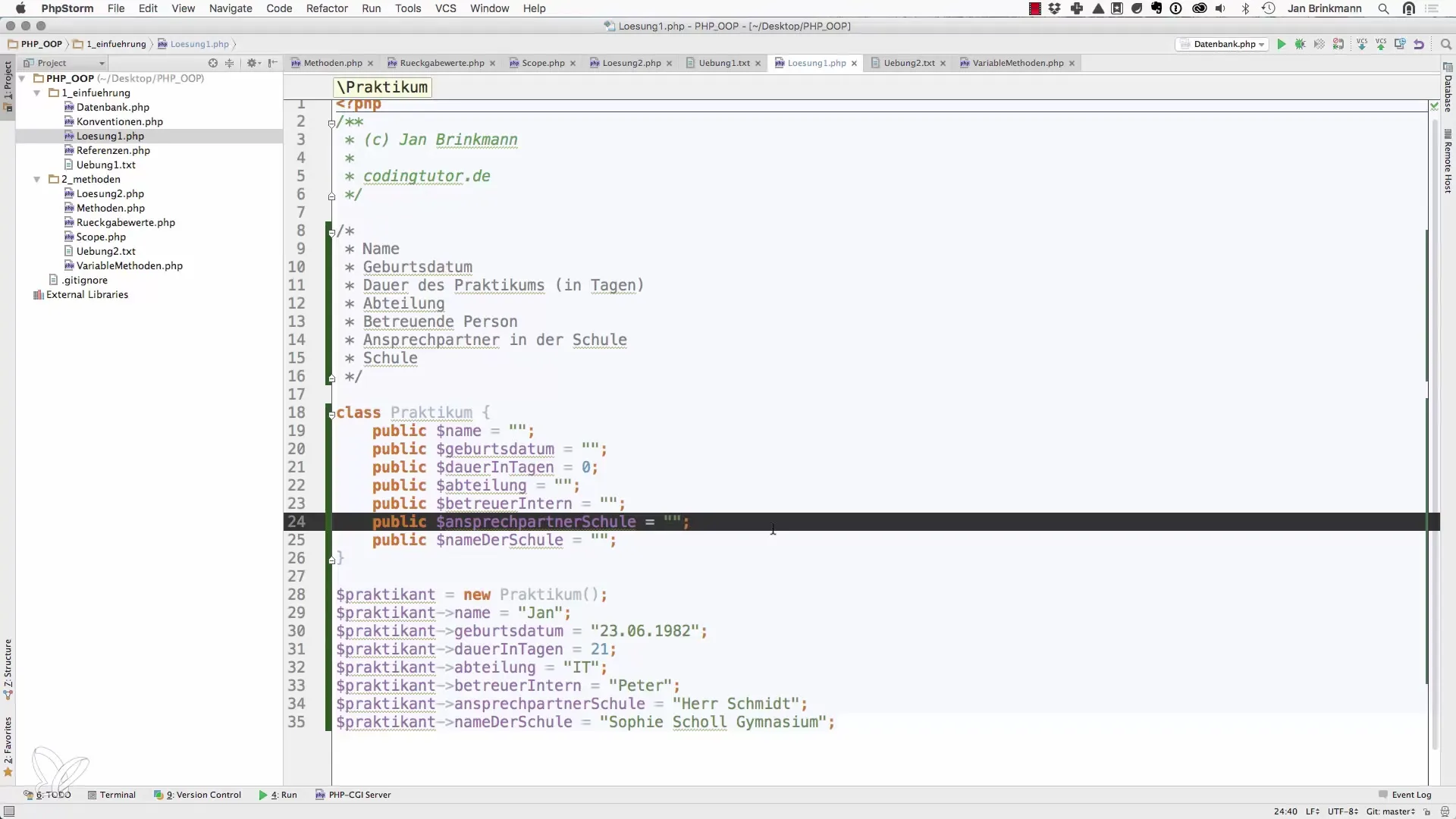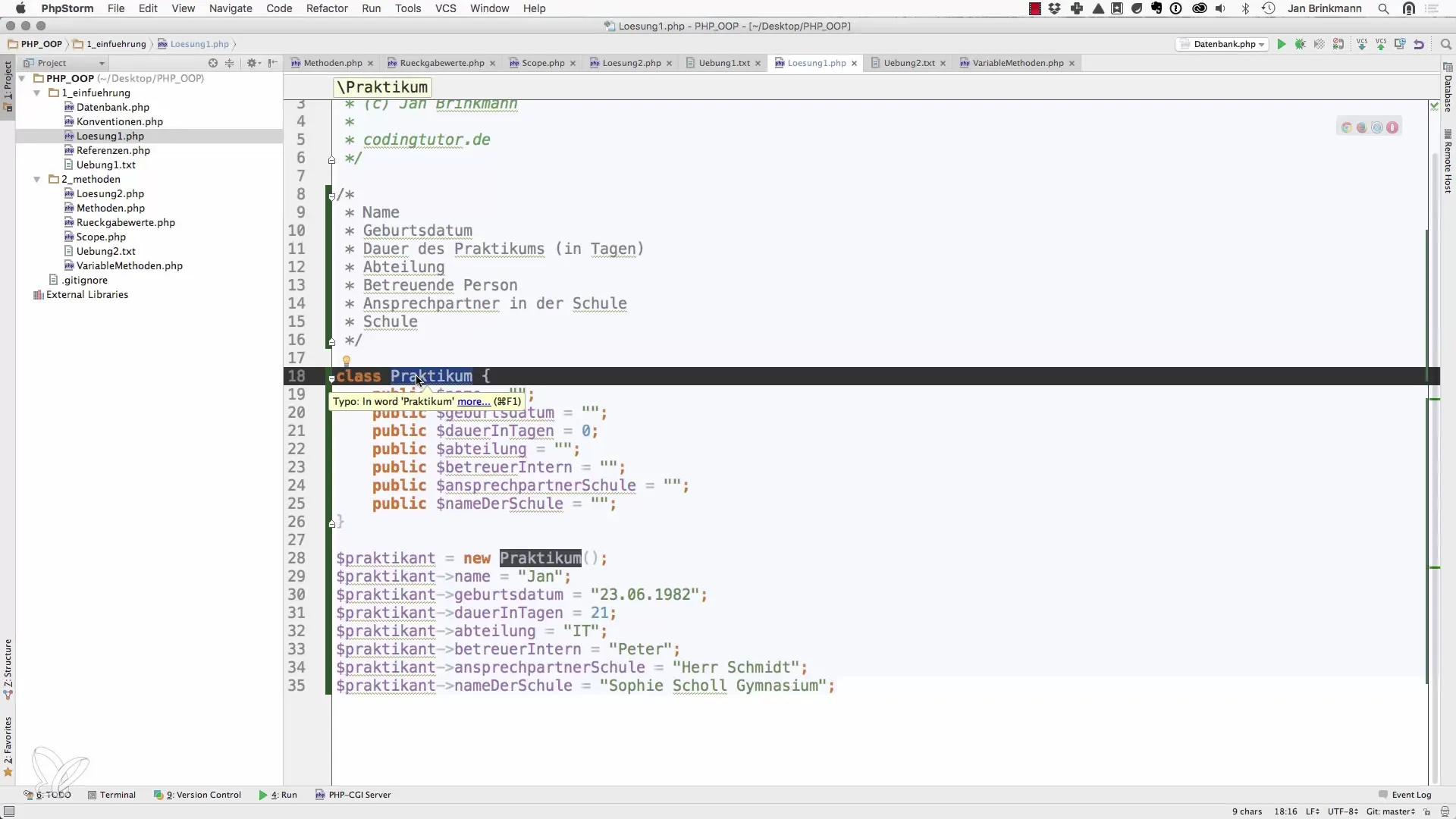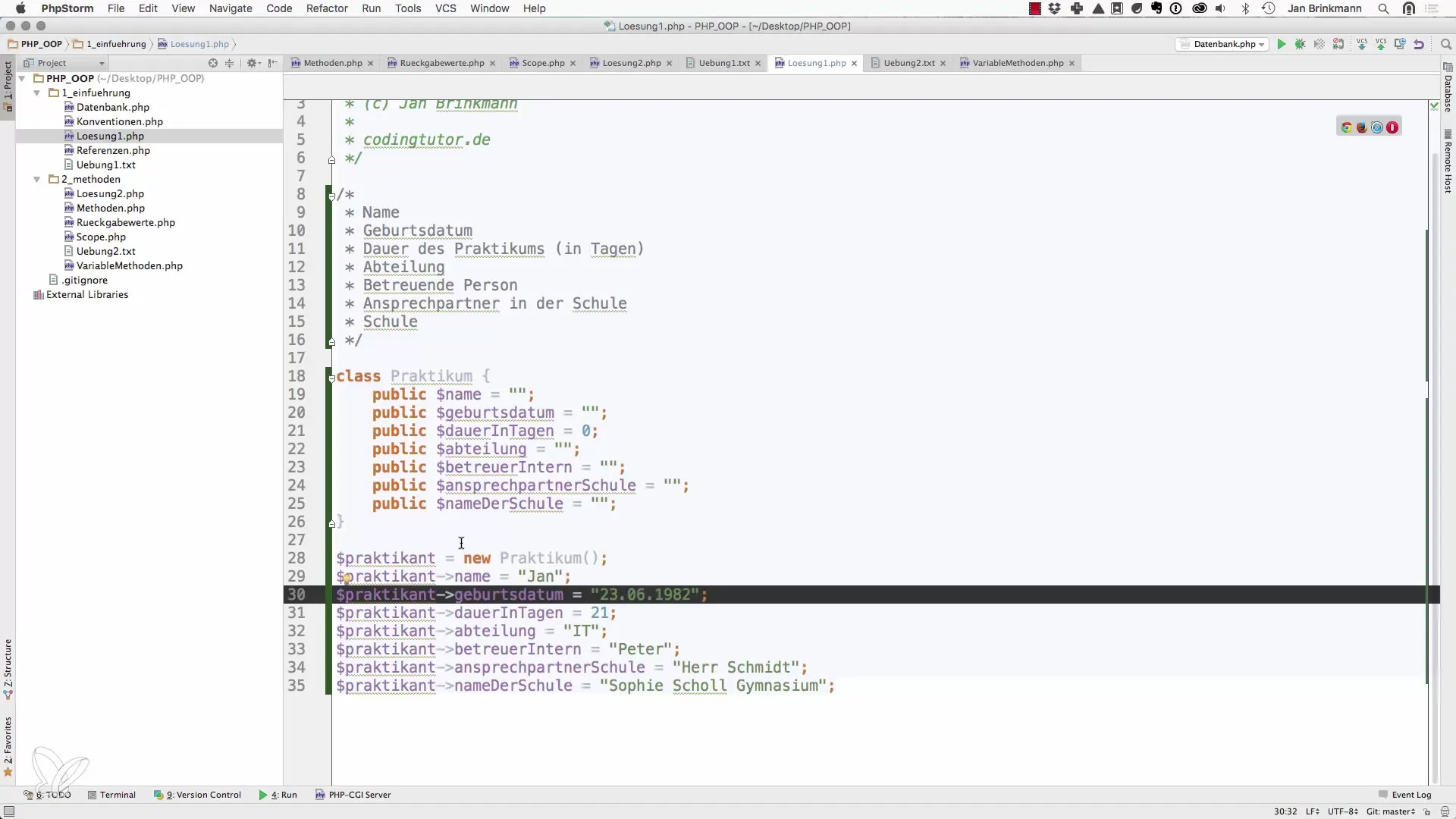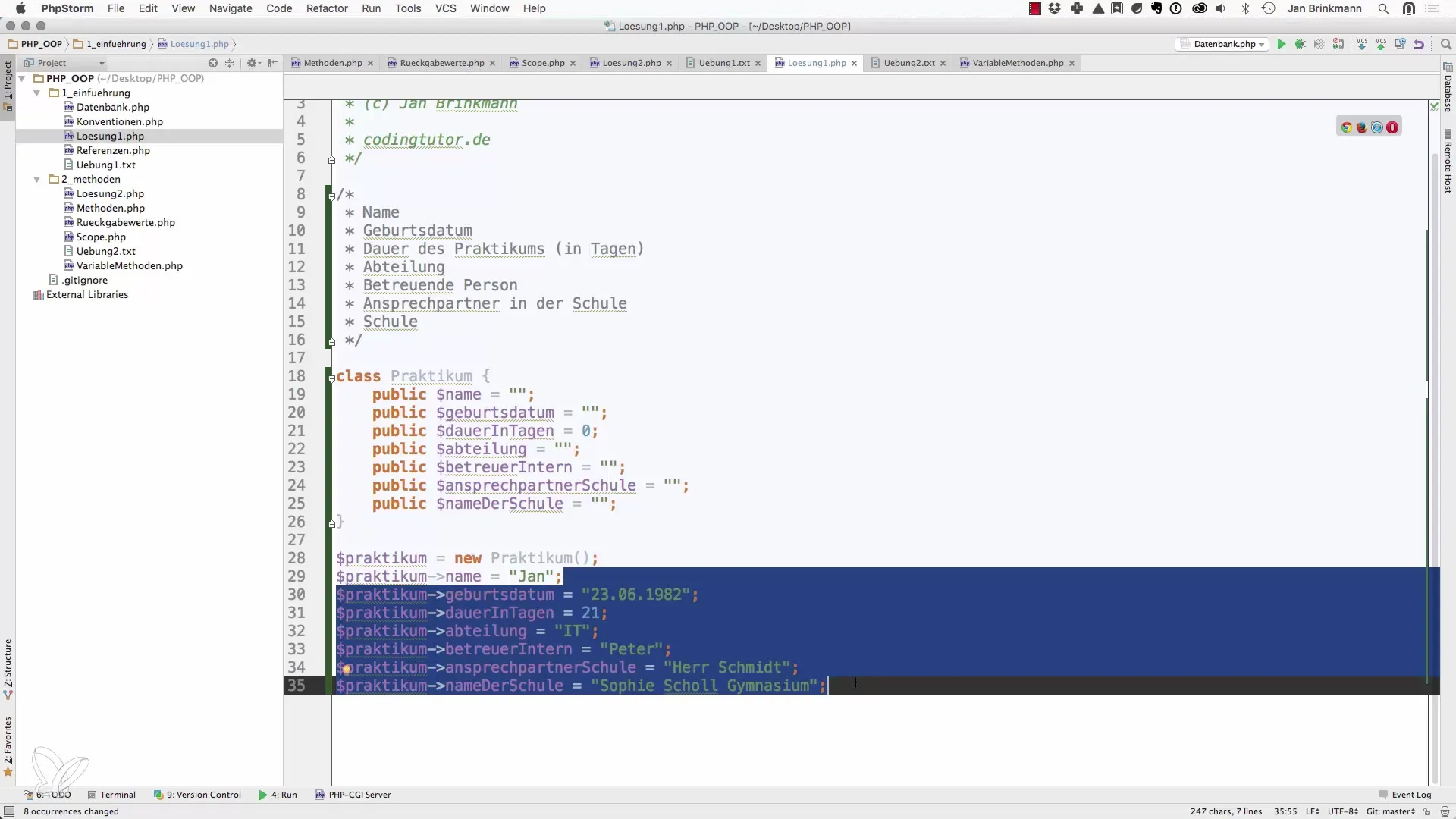Creating object-oriented web applications in PHP is fundamental for software development. In this guide, I will show you how to implement a simple yet effective solution for a typical programming task. We will develop the structure of a class and its methods to help you encapsulate objects and manage their properties. The use cases will be described practically.
Key Findings
- Documenting requirements and properties can significantly facilitate development.
- Clearly defined classes and their methods are crucial for the maintainability of the code.
- A meaningful naming convention for variables and classes improves the readability and understandability of the code.
Step-by-Step Guide
Step 1: Documenting Requirements
Before you start programming, it’s important to document all requirements and variables. This documentation gives you a clear overview of what is needed during development. Add a comment above the code in which you note all relevant requirements, such as different pricing tiers or calculation formulas.

Step 2: Create Class
You start with creating a class in PHP that will encompass all properties and methods. Name the class, depending on the context, "Internship". Even if you might have another name in mind, consistency is important to avoid future confusion. Remember that the name of your class should reflect both its purpose and function.

Step 3: Define Your Properties
Create a list of properties within your class. These could include the name of the intern, the date of birth, and the duration of the internship. Be sure to name variables correctly; they should start with a lowercase letter and use CamelCase. This improves the clarity of your codebase.

Step 4: Instantiate an Object
After defining the class and its properties, you instantiate an object of the class "Internship". Name the object meaningfully to avoid confusion. In this example, the object should be named after the class, so "Internship" is more appropriate than "Intern". Here, it’s best to rename it to clearly define the variable.

Step 5: Set Information
The next thing you need to do is set the object's properties with the concrete values. The assignment of these values can occur right after the object is created. For the future, however, it would also be useful to create a constructor to pass all required values when instantiating the object. Right now, though, we will focus on setting the values individually.

Step 6: Add Methods
Now that you have a functioning object, it’s time to add methods. These methods enable you to perform interactions with the object, such as calculating prices. Document the functionalities thoroughly here as well, to create clarity about the objectives of each method from the beginning.
Summary – Object-Oriented Programming in PHP: Step by Step to the Solution
In this guide, you have learned how to apply the fundamentals of object-oriented programming in PHP. We documented requirements, created a class, defined properties, instantiated an object, and added methods. These steps are crucial for the successful development of structured applications and help you program more efficiently.
Frequently Asked Questions
How important is documentation in the programming process?Documentation helps to clearly outline requirements and supports you during the development processes.
Should I be consistent in naming variables?Yes, a consistent naming convention improves the readability and understandability of the code.
How can I ensure the maintainability of my code?By implementing clear classes, documentation, and useful methods, you increase maintainability.


